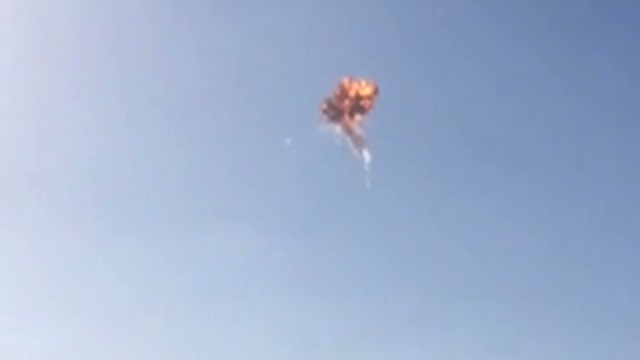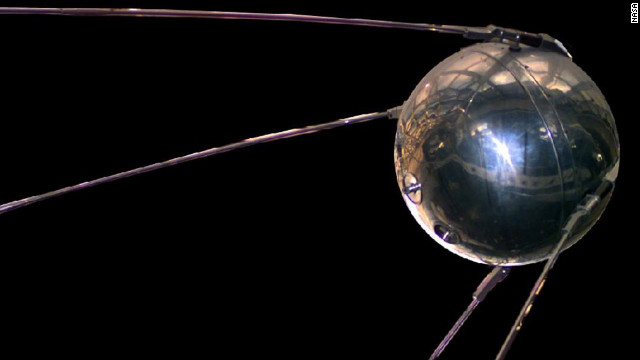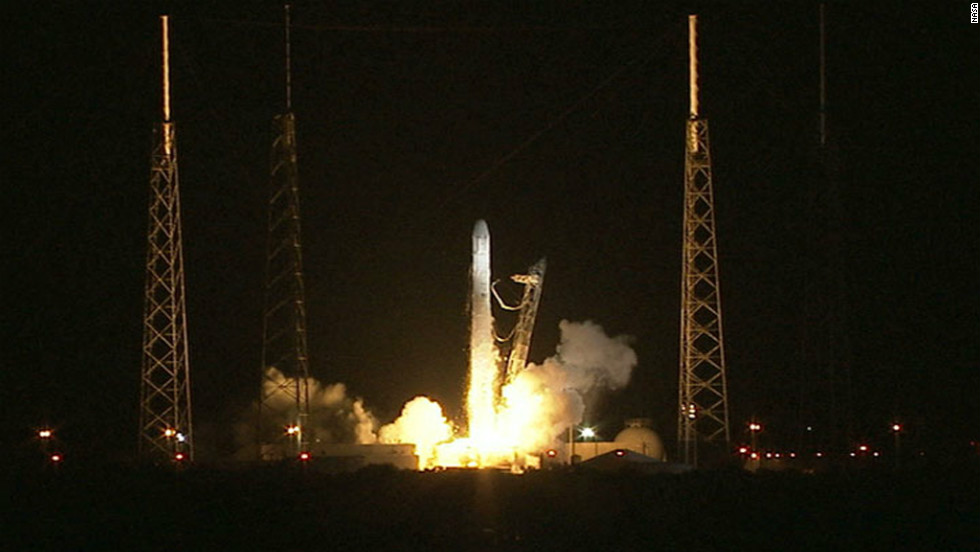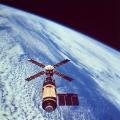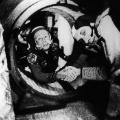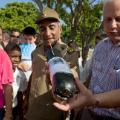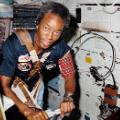Story highlights
- The rocket self-destructed as a safety measure
- It's a common practice in the aerospace industry
- The experimental F9R can land on its feet and is designed to be reusable
- Reusable rockets could be useful for travel to Mars -- and back again
A rung on the long ladder to Mars broke Friday, when a rocket test in Texas ended in a midair ball of fire.
Debris from the unmanned SpaceX Falcon 9 Reusable (F9R) rocket, which self-destructed less than 20 seconds after launch, rained down from the flames onto an open field outside of McGregor.
A hitch turned up during launch, and the "flight termination system automatically terminated the mission," SpaceX said in a statement.
"There were no injuries or near-injuries."
But it was a vivid firework for bystanders parked on a nearby country road -- and for their cellphone cameras. CNN affiliate KWTX reported the explosion on Friday and posted video.
SpaceX said it will look at flight data to determine what went wrong with the three-engine version of the rocket.
All about the landing
It's not how it flies up but how it comes down that makes the F9R a steppingstone to a Mars mission. The rocket has a landing gear -- four legs that stick out like an insect's. So did its even shorter predecessor, which bore the name Grasshopper.
Until now, American space rockets have never been designed to return in the same fashion or form as they departed. The bulk of the rocket was jettisoned into the ocean, or discarded in low orbit to fall back through Earth's cosmic incinerator, or left in the eternal void. Whatever you wanted to keep -- solid boosters, capsules, astronauts -- had to be lowered with chutes or glide in on a shuttle.
Not so the F9R. All of it, in one piece, slowly backs down to the pad it took off from, using its booster engines, and sets down gingerly on its feet.
That makes it reusable, a characteristic useful for a future mission to Mars -- if anyone plans to return home from there, that is.
Mars, here we come
A trip to the Red Planet is the visionary call of the space industry. Mars One, a Dutch nonprofit, already is taking applications for one-way space pioneers who would spend the rest of their lives on a permanent Martian settlement.
SpaceX CEO Elon Musk has a similar ambition: He foresees the human colonization of Mars and other planets as the next step in human evolution, according to the company's website.
There is also a less sexy but more immediate advantage to reusable rockets: They save tons of money. SpaceX's large Falcon 9 rockets cost about $54 million each, the company says.
That's roughly the price tag of a smaller pre-owned passenger jet in good shape. But a jet flies multiple times. Making rockets reusable would cut space flight costs enormously, SpaceX says.
That competitive edge could come in handy really soon.
SpaceX and three other firms -- Boeing, Blue Origin and the Sierra Nevada Corp. -- are racing to develop a "safe, reliable and cost-effective" means of transporting crew to low-Earth orbit, according a statement from NASA this week. The space agency plans to award, this month or next, "one or more contracts" for commercial transport to and from the International Space Station.
A short-hopper
F9R rockets don't rumble the earth with the kind of thunder that the space shuttles or Saturn V rockets once did, and the F9R is relatively small, comprising only one stage.
It's a sawed-off version of its parent, the Falcon 9, the first rocket from a commercial company to fly to the International Space Station, according to SpaceX.
Nine rocket engines fire up to boost the Falcon 9 into Earth's orbit. Just three propel the F9R, which has only flown to an altitude of 1,000 meters (3,280 feet). That's less than twice the height of New York's One World Trade Center -- a trivial feat for a rocket -- but coming back down from there in one piece is not.
Rocket science is, well, rocket science, even for small rockets sometimes, and failures in various stages of space missions happen regularly.
In mid-May, a Russian satellite launch went sour when the rocket veered off path, causing an emergency system to cut off propulsion. The rocket had traveled 100 miles high and reportedly burned up in the atmosphere on its way back down.
It was at least the fourth failure by a Proton-M rocket, a legendary workhorse of the Russian space program.
As Musk tweeted after F9R's self-detonation:
"Rockets are tricky ..."
